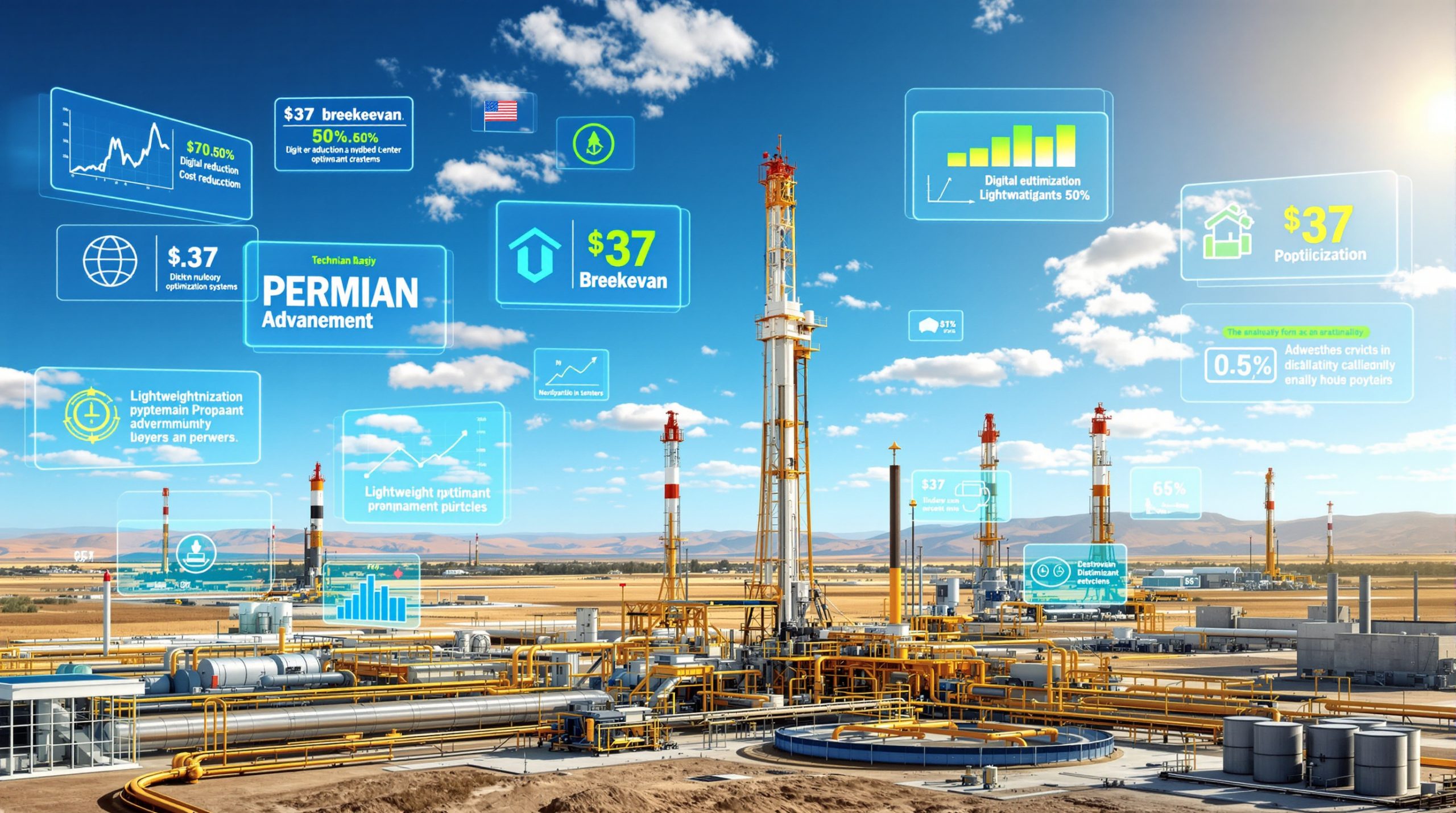What Is Driving the Renewed Interest in Nuclear Energy?
The Growing Need for Clean Baseload Power
Nuclear energy has emerged as a critical solution for providing reliable baseload power in our carbon-constrained world. Unlike intermittent renewable sources, nuclear plants deliver consistent electricity 24/7, regardless of weather conditions or time of day. This reliability has become increasingly valuable as countries seek to reduce carbon emissions while maintaining grid stability.
Modern nuclear facilities operate at capacity factors exceeding 90%, far outperforming other energy sources. France demonstrates this reliability, generating approximately 80% of its electricity from nuclear power, creating one of the cleanest electricity grids in Europe.
AI and Data Centers Creating Unprecedented Demand
The explosive growth of artificial intelligence and data centers is dramatically increasing global electricity demand. These technologies require massive amounts of reliable, clean power that can be delivered continuously.
According to recent projections, AI-related electricity consumption could increase by 9-10 times current levels by 2030. Microsoft, Google, and Amazon are already exploring nuclear partnerships to power their expanding operations, recognizing nuclear's unique capacity to provide large-scale, carbon-free baseload power.
"AI demand is 'icing on the cake' for nuclear—the fundamental needs for electrification and decarbonization alone justify nuclear expansion." —Perender, WMC
Climate Goals and Energy Security Concerns
Nations worldwide now recognize that meeting ambitious climate targets while ensuring energy independence often requires uranium and nuclear energy in the energy mix. The 2022-2023 global energy crisis particularly highlighted vulnerabilities in fossil fuel supply chains.
Nuclear offers a compelling solution to this dual challenge:
- Low Carbon Emissions: Full lifecycle emissions of 12g CO₂/kWh (comparable to wind)
- Fuel Security: Uranium can be stockpiled for years of operation
- Domestic Production: Reduces reliance on imported energy
- Geopolitical Stability: Supplies from allied nations with stable governance
Countries that previously rejected nuclear are now reconsidering their stance, recognizing its role in achieving both climate security and energy independence.
How Is the Global Nuclear Landscape Changing?
Country-by-Country Nuclear Policy Shifts
The global attitude toward uranium and nuclear energy is experiencing a remarkable transformation. Nations that once planned to phase out nuclear power are now reversing course:
| Country | Recent Nuclear Policy Changes |
|---|---|
| France | Committed to building 14 new reactors by 2050 |
| United States | Executive orders aimed at quadrupling capacity by 2050 |
| China | Constructing 8-10 reactors annually (half of global construction) |
| Belgium | Completely reversed phase-out, extending reactor lifespans |
| South Korea | Canceled phase-out after 2022 energy crisis |
| Japan | Restarting fleet and extending operational licenses |
| UK | Committed to building 8 new reactors |
| Kazakhstan | Planning first nuclear plants with operation by 2035 |
These policy shifts reflect a growing recognition that nuclear power is essential for deep decarbonization while maintaining reliable electricity systems.
Notable Holdouts and Political Challenges
Despite the growing trend toward nuclear acceptance, some countries remain resistant:
Germany continues its phase-out despite energy security challenges and increased carbon emissions. This decision stems largely from coalition politics rather than technical or economic considerations. Germany has spent over €500 billion on its Energiewende (energy transition) yet still struggles with grid stability and relies heavily on lignite coal during low-wind periods.
Taiwan presents an interesting case where public polling shows majority support for nuclear energy, yet political leadership has maintained anti-nuclear policies. The disconnect between public sentiment and policy highlights how nuclear decisions often transcend purely technical considerations.
The China Factor in Global Nuclear Development
China has established itself as the undisputed world leader in nuclear construction, consistently completing projects on time and on budget. Their standardized approach to building multiple reactors annually has created unmatched expertise in nuclear deployment.
"China's programmatic approach—building 8–10 reactors per year—mirrors France's successful 1970s model. This consistency creates enormous expertise and efficiency." —Perender, WMC
China currently operates 55 reactors and has 24 under construction. At current rates, China will surpass the United States as the world's largest nuclear power producer by 2030. This efficiency demonstrates what's possible when countries commit to programmatic nuclear development rather than one-off projects.
What's Happening in the Uranium Market?
Supply-Demand Fundamentals Creating Structural Tightness
The uranium market is experiencing growing supply constraints against rapidly expanding demand. Several factors contribute to this tightness:
- Inelastic Demand: Nuclear plants require uranium as their only fuel source with no substitutes
- Long-Term Consumption: Once built, reactors create consistent demand for 60-100 years
- Cost Structure: Fuel represents only 5-10% of a nuclear plant's operating expenses, making demand highly inelastic to uranium price changes
- Development Timelines: New uranium mines face 7-10 year permitting and construction timelines
- Price Insufficiency: Current uranium prices remain below the level needed to incentivize many new mining projects
The supply side has faced significant challenges, with production from Kazakhstan (the world's largest producer) plateauing and delays affecting major projects in Canada, including NextGen Energy and Denison Mines developments due to regulatory processes.
Investment Landscape and Market Size
The investment universe for uranium and nuclear energy remains relatively small but is expanding:
- Total market capitalization of publicly traded uranium companies: ~$60 billion
- Physical uranium held by Sprott Physical Uranium Trust: ~50 million pounds
- Annual global uranium demand: ~180 million pounds
- Current production: ~140 million pounds (creating a structural deficit)
Investment options range from junior explorers with higher risk/reward profiles to established producers with stable operations. Physical uranium vehicles like the Sprott Physical Uranium Trust provide direct exposure to uranium price movements without mining operational risks.
For broader nuclear exposure, investors can consider utilities with significant nuclear assets (like Constellation Energy and EDF) and reactor vendors (such as Westinghouse and Cameco).
Price Signals and Production Incentives
Current uranium prices, despite recent increases to around $65-70/lb, remain below the level needed to stimulate sufficient new production. The recent Paladin uranium halt in Namibia operations until 2025 further illustrates the challenges in bringing supply online.
"Deep Yellow Limited has publicly stated that current prices are inadequate to advance their projects. This indicates that further price appreciation may be necessary to bring new supply online." —Perender, WMC
Industry analysts estimate that sustaining prices of $75-85/lb will be needed to incentivize the development of new uranium mines required to meet growing demand. This price threshold is particularly important for projects in jurisdictions with higher operating costs or more complex regulatory environments.
How Does Nuclear Energy Support Grid Stability?
The Technical Advantages of Nuclear for Power Systems
Nuclear power plants provide critical grid stability benefits that are increasingly valuable in modern power systems:
Spinning Reserve: Large nuclear turbines create kinetic energy that helps maintain grid frequency during disruptions. A typical 1,000 MW nuclear plant provides approximately 500 MW of instantaneous inertia, essential for frequency regulation.
Predictable Output: Unlike weather-dependent renewables, nuclear provides consistent generation regardless of external conditions, with capacity factors exceeding 90%.
System Inertia: The physical mass of nuclear turbines creates natural resistance to sudden frequency changes, protecting against blackouts during grid disturbances.
Long-Term Reliability: Modern nuclear plants can operate for 60-100 years with appropriate maintenance, providing multi-generational grid stability.
Learning from Recent Grid Failures
Recent power system failures demonstrate the consequences of insufficient baseload and spinning reserve capacity. Spain's grid instability in April 2025 resulted from inadequate spinning reserves during a period of low renewable generation, highlighting the technical limitations of grids heavily dependent on intermittent resources without adequate firm capacity backup.
During the 2023 U.S. Northeast winter storm, nuclear facilities maintained 95% availability while natural gas plants dropped to 45% availability due to fuel supply constraints. These real-world examples underscore nuclear's crucial role in maintaining grid resilience during extreme conditions.
Complementary Role with Renewables
Nuclear energy works effectively alongside renewable energy sources in a modern, low-carbon grid:
- Nuclear provides the stable foundation while solar and wind contribute variable generation
- This combination maximizes carbon reduction while maintaining reliability
- Flexible operation of newer nuclear designs can help balance renewable intermittency
- Countries with both high nuclear and renewable penetration typically have the cleanest and most stable grids
France and Sweden demonstrate this complementary approach, maintaining some of the lowest carbon electricity systems in the developed world through the combination of nuclear baseload and renewable resources.
What's Behind the U.S. Nuclear Renaissance?
Recent Policy Developments and Executive Orders
The United States has recently announced ambitious plans to revitalize its nuclear sector:
- Executive orders aimed at quadrupling nuclear capacity by 2050
- Streamlined permitting processes for new nuclear projects
- Commitment to having multiple reactors under construction by 2030
- $2 billion allocation to domestic uranium conversion and enrichment capacity
- Support for extending existing nuclear plant licenses to 80 years
This policy shift represents the most significant U.S. commitment to nuclear energy in over 50 years, recognizing nuclear's essential role in achieving both climate and energy security goals.
Bipartisan Support for Nuclear Expansion
Unlike many energy issues, nuclear power enjoys significant support across the political spectrum in the United States:
- 75% of Congress supported nuclear provisions in recent energy legislation
- Climate advocates acknowledge nuclear's carbon-free attributes
- National security experts emphasize the strategic importance of nuclear leadership
- Labor unions support the high-quality jobs created by nuclear construction and operation
This rare political consensus provides a stable foundation for long-term nuclear development, reducing regulatory and policy uncertainty that has historically challenged the industry.
Competition with China Driving Innovation
The United States is responding to China's growing nuclear dominance with renewed commitment to nuclear technology leadership:
"The U.S. wants to counter China's dominance… losing nuclear leadership risks ceding global standards for safety and non-proliferation." —Perender, WMC
This competition is driving innovation in several areas:
- Advanced reactor designs with enhanced safety features
- Small modular reactors for flexible deployment
- Microreactors for remote and military applications
- Digital control systems and simulation technologies
- Advanced manufacturing techniques for nuclear components
The race to maintain nuclear leadership has created a new innovation ecosystem with public-private partnerships accelerating technology development.
How Long Does Nuclear Infrastructure Last?
Extended Operating Lifespans of Nuclear Plants
Modern nuclear power plants are proving to be remarkably durable assets:
- Originally designed for 40-year operational lifespans
- Engineering assessments now support 60-80 year operations
- Some facilities may potentially operate for a century with proper maintenance
- Component replacements (turbines, steam generators) can effectively rejuvenate aging plants
The Dominion Energy Surry Nuclear Power Station in Virginia received approval to operate for 80 years, demonstrating the industry's confidence in the long-term viability of these assets. This extended operating life significantly improves the economic case for nuclear investment.
Long-Term Demand Stability for Uranium
This extended operational life creates unique stability in uranium demand:
- Once built, a reactor will require uranium fuel for many decades
- Unlike fossil fuel plants, nuclear facilities rarely curtail operations due to fuel price fluctuations
- The inelasticity of uranium demand (as fuel costs represent only 5-10% of operating expenses) means consumption patterns remain stable even during uranium market volatility
- Reactor operators typically maintain 2-3 years of fuel inventory, creating consistent procurement patterns
These factors create predictable, long-term demand patterns that are unusual in commodity markets and provide a stable foundation for uranium investment.
Multi-Generational Return on Investment
The exceptional longevity of nuclear assets creates unique economic characteristics:
- Initial capital costs can be amortized over many decades
- Later operational years typically have very low costs and high profitability
- Nuclear plants often become "cash cows" in utility portfolios after initial financing is paid down
- Infrastructure investments (transmission, cooling systems) continue providing value for 60+ years
This extended economic life means that nuclear plants built today could still be generating carbon-free electricity for our grandchildren, representing a multi-generational investment in clean energy infrastructure.
What Are the Investment Opportunities in the Nuclear Sector?
The Uranium Mining Investment Spectrum
Investors can access the uranium market through various vehicles with different risk-reward profiles:
Junior Explorers: Highest risk/reward, focused on discovering and developing new uranium deposits. Companies like Deep Yellow Limited (ASX: DYL) and Fission Uranium Corp (TSX: FCU) offer leveraged exposure to uranium price movements but face development uncertainties.
Mid-Tier Developers: Companies with defined resources moving toward production. NexGen Energy (NYSE: NXE) and Denison Mines (NYSE: DNN) have advanced projects with clear development timelines but still face permitting and construction risks.
Established Producers: Lower volatility, steady operations with existing mines. Cameco (NYSE: CCJ) and Kazatomprom (LSE: KAP) provide more stable exposure to the uranium market with current production and established customer relationships.
Physical Uranium Funds: Direct exposure to uranium price without operational mining risks. The Sprott Physical Uranium Trust (TSX: U.UN) holds approximately 50 million pounds of physical uranium, offering pure-play exposure to commodity price movements.
Beyond Mining: The Broader Nuclear Value Chain
Investment opportunities extend throughout the nuclear ecosystem:
- Fuel Cycle Companies: Centrus Energy (NYSE: LEU) for uranium enrichment services
- Reactor Vendors: GE Hitachi, Westinghouse (through Brookfield Business Partners)
- Utilities with Nuclear Assets: Constellation Energy (NASDAQ: CEG), EDF (EPA: EDF)
- Nuclear Technology Innovators: NuScale Power (NYSE: SMR), TerraPower (private)
Each segment offers different exposure to the nuclear renaissance, from direct uranium price sensitivity to regulated utility returns backed by nuclear assets.
Market Size and Growth Potential
While currently modest in size compared to other energy sectors, the nuclear investment universe is expanding:
- Total market capitalization of uranium companies around $60 billion
- Growing institutional investor interest, particularly from ESG-focused funds recognizing nuclear's role in climate solutions
- Potential for significant valuation growth as nuclear capacity expands globally
- Increasing inclusion in clean energy indices and ETFs
For perspective, this market capitalization remains smaller than many individual technology companies, suggesting significant room for growth as nuclear's role in the clean energy transition becomes more widely recognized.
What Challenges Does the Nuclear Industry Face?
Permitting and Regulatory Hurdles
Despite growing support, nuclear projects still face significant regulatory challenges:
- Lengthy licensing processes often exceeding 5 years in many jurisdictions
- Complex environmental assessments and public consultations
- Inconsistent regulatory approaches across different countries
- Staffing constraints at regulatory agencies creating bottlenecks
Recent efforts to streamline these processes in the U.S. and Canada show promise, with the Canadian Nuclear Safety Commission working to improve timelines for projects like NextGen and Denison Mines. However, regulatory efficiency remains a critical challenge for the industry's growth.
Public Perception and Education Gaps
While public support for nuclear is improving, misconceptions remain:
- Lingering concerns about safety despite nuclear's strong safety record (lowest fatality rate per TWh of any energy source)
- Limited public understanding of radiation and nuclear technology
- Confusion between civilian nuclear power and nuclear weapons
- Need for better communication about nuclear's environmental benefits
Recent polling shows increasing support for nuclear energy, with 60-70% of Americans now favoring it, up from 50% a decade ago. This trend suggests that education efforts are making progress, though significant work remains.
Supply Chain and Workforce Development
The nuclear industry faces practical challenges in scaling up:
- Atrophied manufacturing capabilities for specialized components like large forgings and pressure vessels
- Aging workforce with key knowledge and skills approaching retirement
- Need for training programs to develop the next generation of nuclear professionals
- Rebuilding industrial capacity after decades of limited new construction
The average age of nuclear workers in many western countries exceeds 50 years, creating an urgent need for knowledge transfer and workforce development. Industry initiatives like the Nuclear Unified Apprenticeship Program aim to address these challenges by creating structured career pathways into the industry.
What Does the Future Hold for Nuclear Energy?
Small Modular Reactors and Advanced Designs
The next generation of nuclear technology promises significant improvements:
- Smaller, standardized designs that can be factory-built (20-300 MW capacity)
- Passive safety features that don't require active intervention
- Flexible operation to complement variable renewable generation
- Potential for lower capital costs and faster deployment
NuScale Power's 77 MW SMR design received U.S. Nuclear Regulatory Commission design certification in 2020, becoming the first SMR to clear this hurdle. Multiple other designs from companies like TerraPower, X-energy, and GE Hitachi are advancing through the regulatory process.
Nuclear's Role in Decarbonization Pathways
Most credible pathways to deep decarbonization include significant nuclear expansion:
- The International Energy Agency's net-zero scenarios
Ready to Profit from the Next Uranium Discovery?
Don't miss out on the next major mineral discovery in the booming uranium sector. Get instant alerts for significant ASX announcements with Discovery Alert's proprietary Discovery IQ model and start your 30-day free trial today at Discovery Alert's discoveries page.




